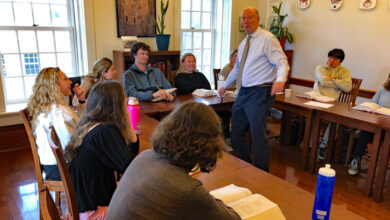Here’s Why Real Christmas Trees Are the Most Environmentally Responsible Choice

ALEXANDRIA, VA – If you are like many people this holiday season, you are asking yourself the big question: real or fake? Which Christmas tree should I get if I want to be mindful of the environment and climate change?
The short answer is to go with the real tree. Here’s why.
In the first place, believe it or not, harvesting and cutting down real trees is better for your carbon footprint for many reasons, including the emissions involved with shipping and manufacture involved in artificial Christmas trees.
“Using real trees helps climate change because you are supporting forests,” says Ray Greenstreet of Greenstreet Gardens in Alexandria, Virginia and Lothian, Maryland. “When natural trees are harvested for sale, there are more than ten times left on the tree farms, plus you are helping the farmer.”
According to nature.org, “Out of the 350-500 million growing on tree farms across the U.S., only 30 million trees are harvested for Christmas each year. Buying real trees will help keep tree farms in business – and in turn keep their lands covered in the healthy forest habitat that wildlife depends on to survive.”
And what’s more, once all the festivities are done, these trees can be recycled and given a second life. Most states have organizations that use these donated Christmas trees for conservation and habitat projects in their local communities. Meanwhile, artificial trees are usually not recyclable and often end up filling our landfills.
Nature.org also says, “We can cut more than 30 percent of the carbon emissions needed to slow climate change with natural solutions like restoring our forests. You purchasing a real Christmas tree means you’re supporting local tree farmers and helping maintain healthy forests for generations to come.”
For every tree purchased, farmers plant 1-3 seedlings in its place according to the National Christmas Tree Association. That means more trees to fight climate change and to provide more vital benefits for people and nature like clean air and water, wildlife habitat and healthy soil.
Also in the News: Preserve Chinquapin Forest Says Recent Letter to the Editor





Correction. They bought the tree from St. Clement Episcopal Church. I realize the photo is tagged to Stacy Greenstreet, so they probably just assumed it was from the Greenstreet nursery, or they knew it wasn’t and just wanted the free publicity. Either way, the photo is incorrectly captioned. I can put you in touch w/the actual couple who were photographed if you like.